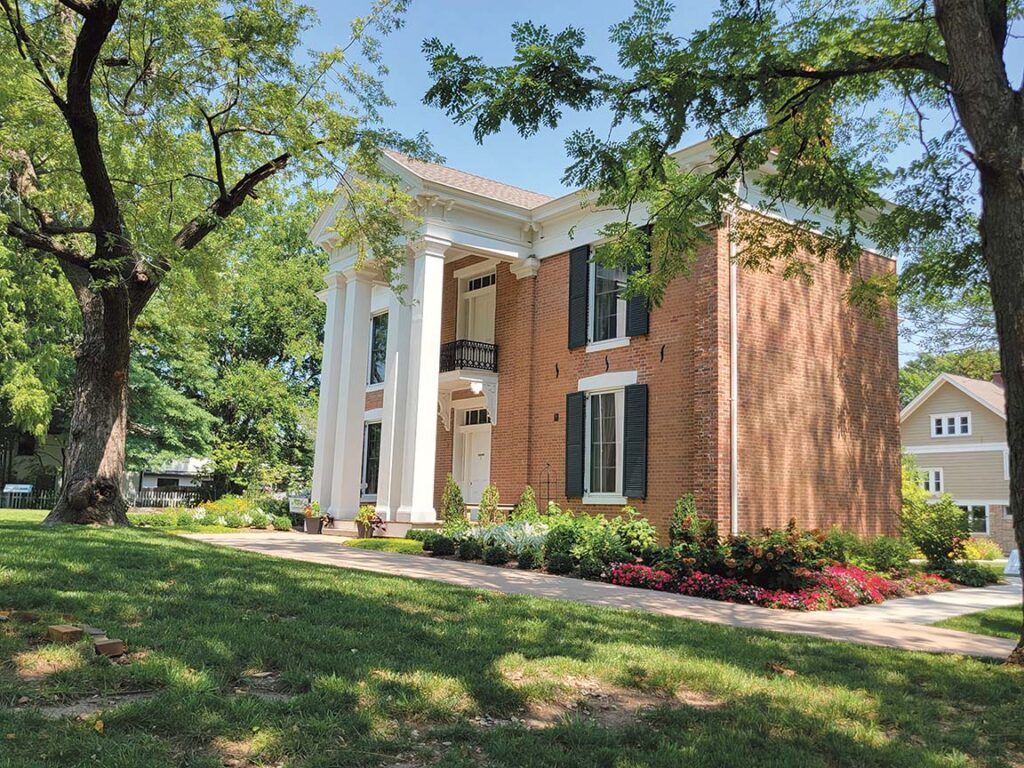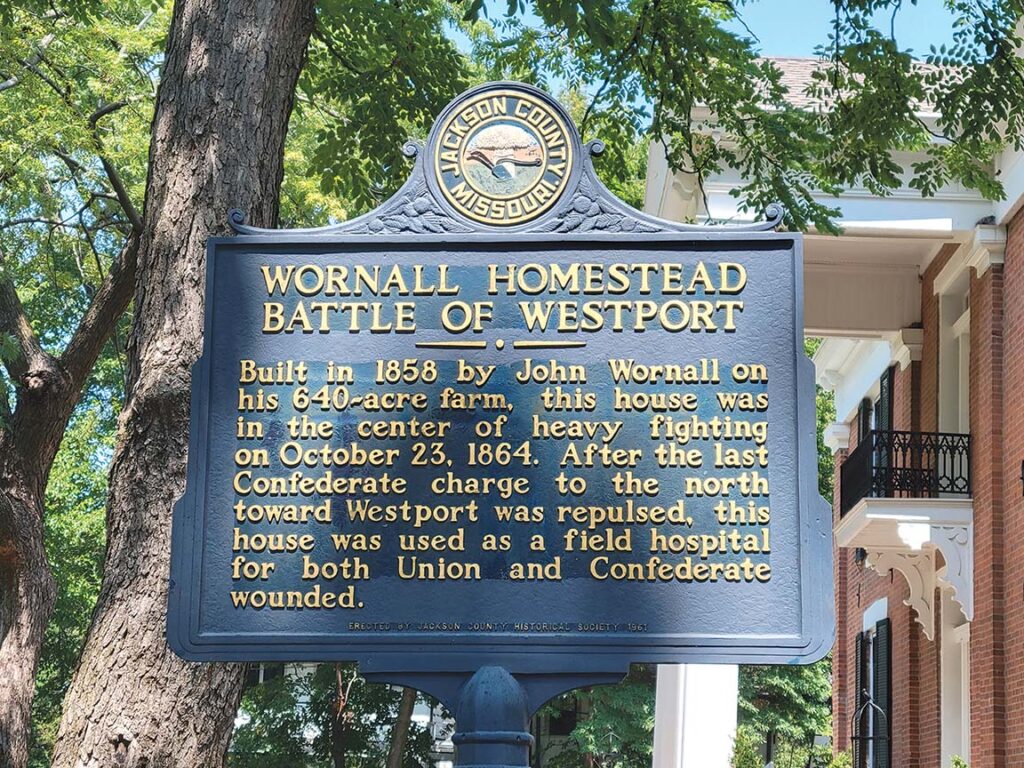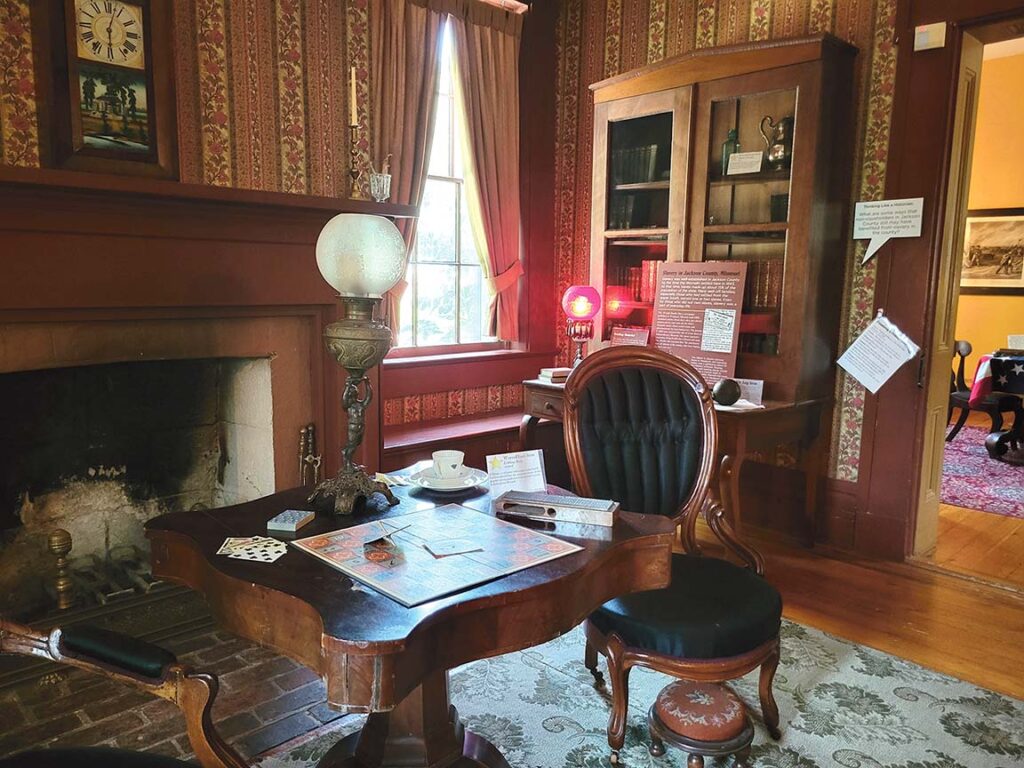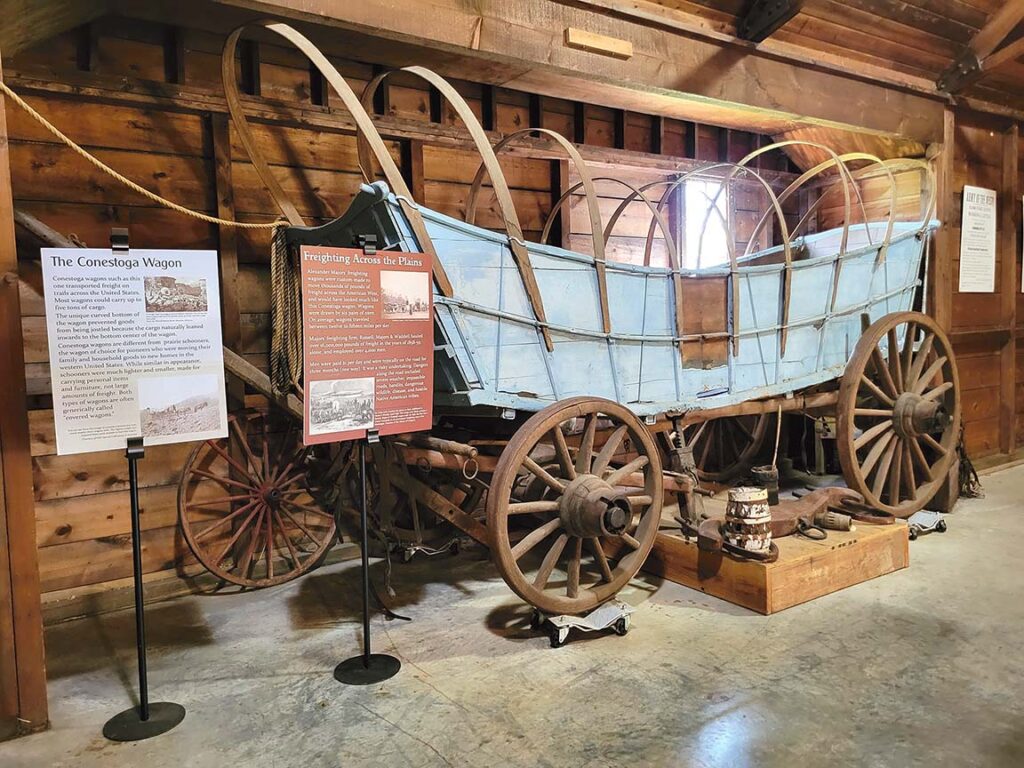
Michael Bushnell
Publisher
Join our Northeast News staff this summer as we hit the road and share with our readers a new weekly feature on where to go and what to do, just a few miles or hours away from home.
For our next adventure, Publisher Michael Bushnell spent the afternoon at museums in Kansas City, Missouri.
This week we wrap up our summer day trip series with an in-town stay-trip day-trip with a visit to the John B. Wornall House and its partner museum a couple miles to the south, the Alexander Majors House. Both are managed by the same non-profit organization focused on the preservation and interpretation of the area’s rich Civil War era history.
First up, the Wornall House museum located at the crest of the hill at 6112 Wornall Road. Built in 1858, the home is one of the four surviving pre-Civil War homes in Kansas City, the other three being the Alexander Majors house at 81st and State Line, the Bent-Ward house near 55th and Sunset and the Harris-Kearney house in Westport. The latter is also a museum but is currently closed for renovations.
A $12 admission fee covers entrance to both the Wornall and Majors museums. All tours are self guided through the museum, or a quick scan of a large QR code near the front door allows access to a guided tour via your smartphone.
According to Wornall-Majors Executive Director Sarah Bader-King, both the Wornall and Majors houses played a large role in Kansas City’s history.
“The Wornall House has more local history as it was a key player in the Battle of Westport,” Bader-King said. “This house was used as a field hospital by both the Confederate and Union wounded during the Battle of Westport on October 23, 1864, so we like to tell the story of Civil War medicine, and the advancement of medicine, the way that that’s changed over time.”
An important piece of the interpreted history at the Wornall House is that of the enslaved people who lived on the property and worked for the Wornall family. Their story is told side-by-side in the museum. Additionally, the term “enslaved” is used versus the term slave.
According to the museum’s website, wornallmajors.org, “this is intended to give each individual humanity versus making their identity contingent on an act imposed upon them.”
The museum is full of artifacts from the Wornall family and was designed to resemble how it may have looked in the lead up to the Civil War. An exhibit in the formal dining room displays artifacts from the Battle of Westport including percussion caps for the firearms, battle flags for both the Union and Confederacy, and a number of cannonballs of various sizes.
Homes of that era were also designed with a hearth kitchen in a rear wing of the house without an interior door to walk through. A large pass-through exists, however, and the kitchen help would slide completed food dishes through to the serving staff who served the family and any guests that the Wornall family entertained.
Members of the Wornall family occupied the house up until 1962. The Wornall property would have spanned north-south from modern-day 59th to 67th streets, and east-west from Main Street to State Line. The house faces west, looking out over Wornall Road (named after the family) and symbolically, the western frontier.
A full tour of the Wornall House is roughly an hour and a half, maybe two hours depending on your level of interest in Civil War era history in Kansas City. Don’t miss the interpretive panels outside the house that give an overview of the Battle of Westport. The Wornall House is also stop no. 10 of the Battle of Westport driving tour.

A quick two mile drive down Ward Parkway and we arrive at the Alexander Majors estate. As we noted before, both the Wornall House and the Majors house museums are owned and managed by the same non profit entity.
Where the Wornall history is more local, Alexander Majors has a much larger national footprint as he was one of the primary freighters who established the Santa Fe Trail in the middle 1840’s. He partnered with William Russell and William Waddell, and by 1857 the firm of Russell, Majors & Waddell owned over 3,500 wagons and roughly 40,000 oxen and were responsible for over 90% of the shipping along the Santa Fe Trail.
Not all of Majors’ business ventures were successful. His founding of the Pony Express in 1860 with Russel and Waddell would ultimately lead to his bankruptcy after 18 short months of carrying the mail to Sacramento, Calif. The introduction of the telegraph would be the Pony Express’s undoing and ultimately the fallout broke the business partnership of the three men.
The home was occupied by descendants of Alexander Majors until 1979 when Major’s great granddaughter Louisa Johnston passed away. Johnston is credited with almost single-handedly saving the home from the wrecking ball on a number of occasions between 1928 and her passing. A passage from her diary notes: “the house was standing vacant with not a whole window of the 46 left in the house. The chimneys are tumbling down on one or more sides, panels had been kicked out of the doors or the doors were missing entirely and the roof was badly in need of replacement.”
In 1950, Johnston opened the house to public tours to raise funds for the restoration. Prior to her death she laid the groundwork for the house’s restoration and listing on the National Register of Historic Places in 1995.
Like the Wornall House, the Majors House is filled with artifacts depicting life on the frontier in the mid-1800’s. While the house did not play a role in the Battle of Westport, the fight came to the house a number of times including when Confederate General Sterling Price’s troops marched past along what is now State Line Road in retreat.
Enslavement was also a factor at the Majors’ house. The family had at least six enslaved people in 1858 when they moved their business to Nebraska City, Neb.
Hours at the Wornall House are Wednesday-Saturday, 10 a.m. to 4 p.m. (the house is closed from noon-1:00 PM for staff lunch break) and Sundays from 1 to 4 p.m. Hours at the Alexander Majors House are Thursday through Sunday, 1 to 4 p.m. The address is 8201 State Line Road. For information on upcoming events or how you can support the museums, visit their website at wornallmajors.org.



















